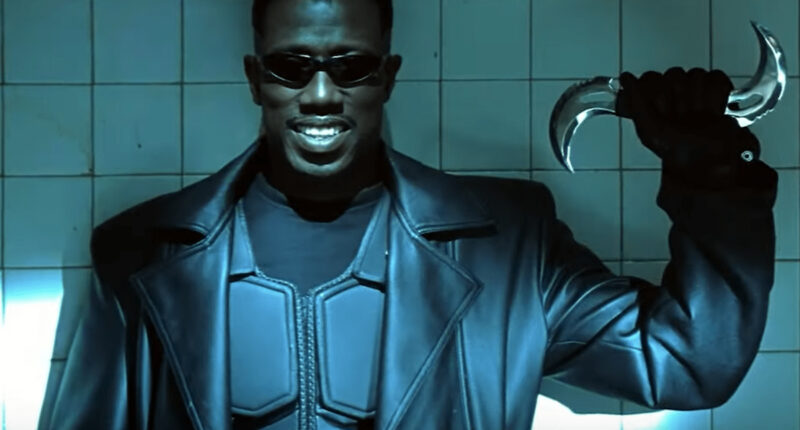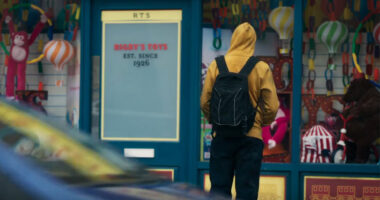Earlier heroes relied on effects or theatrics. Christopher Reeve’s Superman lifted helicopters through visual effects or displayed raw power in broad gestures. Michael Keaton’s Batman fought stiffly inside a rubber suit. None of it resembled grounded combat.
Blade introduced something else entirely. In the blood rave sequence, he dismantles an entire club of vampires with a hybrid of kung fu, swordplay, and street brawling. When the glaive arcs through the air before snapping back into his palm, the film announces a new action language. His hospital fight with the vampire Quinn (Donal Logue), where he flips him through walls, catches scalpels mid-air,and then burns the undead with a UV lamp, showed audiences a superhero who fought with strategy and style.
That influence reverberated across Hollywood. A year later, The Matrix would cement martial arts as the new wave of modern action, but Blade had already laid the groundwork. You can see its legacy in the intimate, ritualized duels of Black Panther, the relentless efficiency of John Wick, the hand-to-hand grit of Robert Pattinson’s Batman, and the breathless brutality of Charlie Cox’s Daredevil. Blade destroyed vampires as well as the outdated model of superhero combat.
Redefining the Look of a Hero
Costume designer Sanja Milkovic Hays went against the bright spandex of the past. Instead Blade’s black trench coat, tactical body armor, and shades created an iconic look that merged noir styling with the broader cultural shift toward Gothic aesthetics. The look was functional but also fashion-forward, tied to the 1990s rise of grunge and urban streetwear. Blade looked like someone who belonged in the shadows of nightclubs and alleys. His gear felt lived-in, scarred from battles, and embodied the vision of a hero forged in violence.
This aesthetic set the standard for what followed. X-Men borrowed the dark leather in 2000. Christopher Nolan expanded it in the militarized grounding of his Dark Knight trilogy. Meanwhile Underworld echoed it so closely it felt almost like an extension of Blade’s universe. The scene where Blade steps out of the hospital elevator, coat billowing and sword at his side, shows why the style was so heavily repeated. His presence alone was a visual statement. He looked like the other side of the millennium, a neo-noir superhero long before the genre caught up.
Sound of the Future
If one moment captures Blade’s futurism, it’s the blood rave. The pounding electronic beats, flashing strobes, and blood raining from sprinklers create chaos that feels disorienting yet inevitable. Then Blade enters, silent and lethal, and the music becomes inseparable from the world around him. Superhero films of the 1990s leaned on orchestral grandeur or radio tie-ins. Danny Elfman’s Gothic score defined Burton’s Batman. Other films sought commercial relevance through pop compilations. Blade rejected all of that with a soundtrack that fused electronic and industrial sounds, mirroring rave culture and underground nightlife, two subcultures rising into the new millennium.









